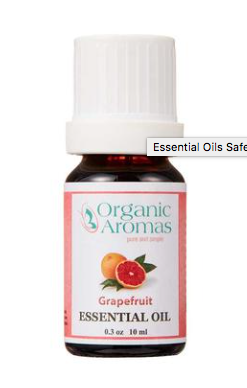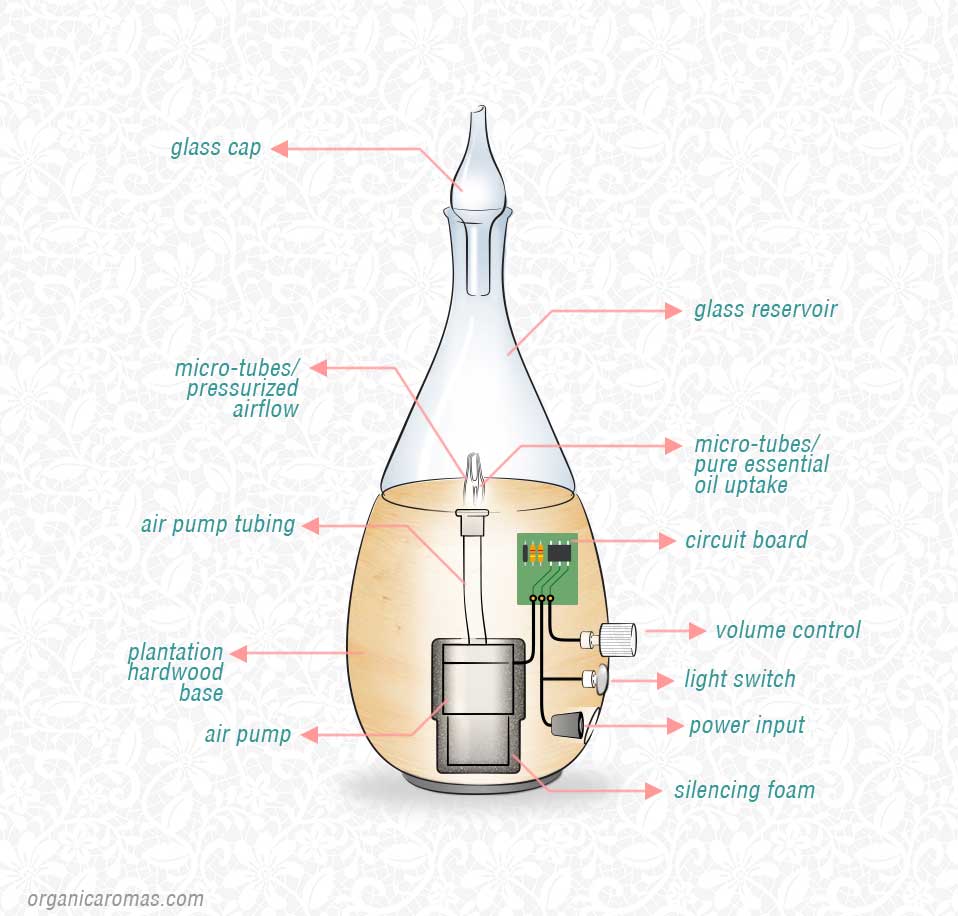
What are essential oils?
Essential oils are volatile aromatic compounds. These natural compounds can be found in plant parts such as seeds, bark, stems, roots, and flowers. There are over 3000 identified essential oils that support physical and emotional well-being. Essential oils can be used as single oils or in combination.
The National Association for Holistic Aromatherapy (NAHA) explains:
The term “essential oil” is a contraction of the original “quintessential oil.” This stems from the Aristotelian idea that matter is composed of four elements, namely, fire, air, earth, and water. The fifth element, or quintessence, was then considered to be spirit or life force. Distillation and evaporation were thought to be processes of removing the spirit from the plant…((https://naha.org/explore-aromatherapy/about-aromatherapy/what-are-essential-oils))
Essential oils are extracted from plant material through distillation or cold pressing.
 10 Common Essential Oils and their Uses
10 Common Essential Oils and their Uses
The most commonly used essential oils and their uses are:
- Roman chamomile: antispasmodic, soothes menstrual cramps, sedative, stress reliever, gentle for children, relieves depression
- Clary sage: topically soothes menstrual cramps, promotes calmness in the nervous system, relieves anxiety
- Eucalyptus: opens congested airways, clearing and uplifting to the mind, energizing, fight migraines, room freshener
- Tea Tree: poison oak rash relief, heals wounds and skin infections, dandruff and scalp conditions, antimicrobial, insect bite relief, fatigue, muscle pain
- Peppermint: relieves nausea, muscle aches, headaches and migraines, mouse deterrent, ant deterrent, promotes digestive health, relieves tension, aids in focus
- Lavender: calming, reduces anxiety, sunburns, scalp conditions, reduces itchiness from insect bites or poison oak, eases tension, increases focus on tasks
- Orange: air freshener, anti-depressant, energizing, mood lifting, anti-inflammatory, antiseptic
- Geranium: healthy skin, antimicrobial, reduces nerve pain, balances hormones, antifungal, antiviral, stress reducer, supports healthy blood pressure
- Ginger: supports healthy digestion, healthy joints, relieves nausea, anti-inflammatory, energizing, reduce bloating and gas
- Grapefruit: improves pimples and acne, weight loss, supports metabolism, motivation, room freshener, antibacterial, and antifungal((https://naha.org/explore-aromatherapy/about-aromatherapy/what-are-essential-oils))((https://draxe.com/roman-chamomile-essential-oil/))((https://doterra.com/US/en/flyers-approved-claims-list))((https://organicaromas.com/collections/pure-essential-oils-for-aromatherapy/products/benefits-and-uses-of-eucalyptus-essential-oil))((http://www.naturallivingideas.com/most-popular-essential-oils/))((https://organicaromas.com/collections/pure-essential-oils-for-aromatherapy/products/benefits-and-uses-of-tea-tree-essential-oil))
How to use Essential Oils
There are three methods of using essential oils: topically, internally, and aromatically. Not all essential oils can be used with all three methods, and it is important to learn about essential oil safety. For example, some oils are flammable or should not be used on skin that is exposed to sunlight. Some oils require dilution and some are not safe for children under 12 years of age. There are special circumstances for pregnancy, and of course, always avoid the eye region. The most important aspect of using essential oils is buy from a reputable source.
- Topically: Essential oils can be diluted for topical use. Fractionated coconut oil or almond oil are great carriers. Never apply to broken skin.
- Internally: Adding a few drops of essential oils to water, tea, or in cooking is a great way to increase flavor while reaping the benefits. Not all oils can be taken internally. It is important to do research. Some companies offer essential oils in capsules as supplements.
- Aromatically: This is perhaps the most confusing method for using essential oils because there are a lot choices. Of course, the most simple aromatic method is to sniff directly from the bottle, but this is not safe for all oils. There are a number of different room essential oil diffuser products.

An aromatherapy diffuser typically uses heat and/or water. A nebuliizing diffuser uses neither and is superior for health benefits. Rainshadow Labs explains:
The main difference between a diffuser and a nebulizer is that a diffuser uses evaporated water particles to transport the essential oil out into the air, while a nebulizer processes essential oils into an almost gas like state and then releases them into the air as very small particles that are more easily absorbed by the body…
If your home has mold or humidity issues, you may want to choose a nebulizer instead due to the fact that a diffuser relies on the continuous evaporation of water in order to operate. By using a nebulizer, you will get all of the benefits of the essential oil without exacerbating the humidity issue. And if your concern just comes down to which choice is more ‘professional’ or slightly more effective, then go with the nebulizer. Because of the smaller particle size of the essential oils released from a nebulizer, the effects are more readily felt and absorbed.((https://www.rainshadowlabs.com/Face-Off-Diffuser-vs-Nebulizer_b_504.html))

I especially like that nebulizer diffuser does not contain plastic and how it works.
Essential oils are a quintessential part of my family’s natural health. For my son who refuses to take internal herbal remedies, aromatic diffusing gets us through stuffy noses and nights of coughing. In addition, I love using essential oils to give my home a fresh scent. The nebulizer diffuser insures I am not adding any more humidity to my home.
What is your favorite essential oil and method of using it?
Arieth / Pixabay
Leave a Reply